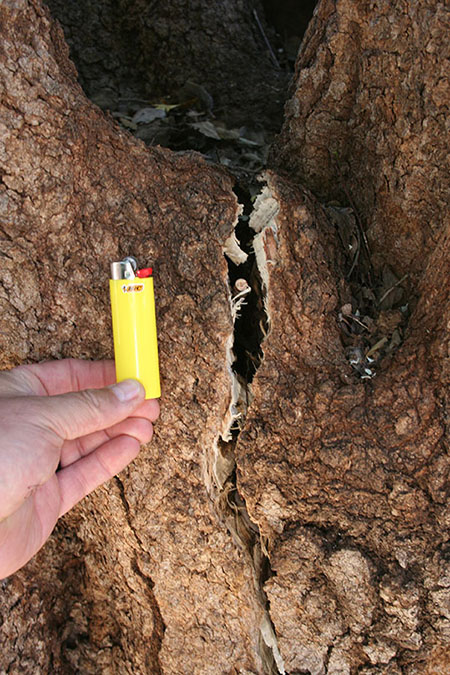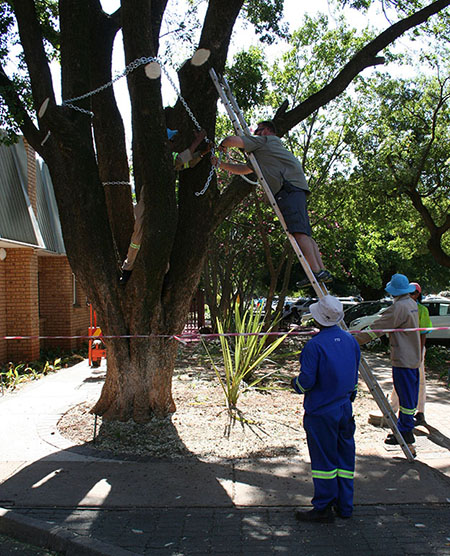“Imagine if trees gave free Wi-Fi. We’d all be planting them like crazy. It’s a pity they only give us the oxygen we breathe.” This quote emphasises the priceless value of trees and the huge responsibility that rests on us to take care of it.
The trees on the North-West University’s (NWU’s) campus in Potchefstroom are an enormous natural treasure and a lot are being done to retain and improve trees in their ecosystem services.
Prof Sarel Cilliers, a botanist at the Faculty of Natural and Agricultural Sciences, says the campus is absolutely blessed to have 126 tree species. Although many of the trees are alien species, he says that it would be ecologically very irresponsible to remove all of them.
“It will be a bad day when we lose the highest trees on campus,” says Prof Cilliers. “The best known of these are the giant plane trees in Lover’s Lane, and the beautiful laurel magnolias.”
Prof Cilliers says the long-term objective should rather be to gradually and selectively replace some of the alien trees, and specifically declared invaders, with indigenous trees.
“Interestingly enough, the best-known trees in Potchefstroom - the willows and the oak trees - are also aliens.”
He is full of praise for Mark Greeff, manager for maintenance and facility services on this campus. Together with his team, Mark manages the balance between the ecosystem services of the trees.
A recent example is when a large Chinese nettle-tree (Celtis Sinensis) at the corner of the F20 building started splitting. Mark and his team attached a thick metal chain around the branches to prevent the tree from splitting in two and possibly falling on the building or vehicles and pedestrians. Mark says they did not want to merely cut down the tree, as it provides shade for pedestrians.
Prof Cilliers further explains that only a limited number (55) of tree species occur naturally in the Potchefstroom area because of the cold winters and frost. “The Botanical Garden has played a major role over the years in planting or ‘testing’ trees that do not grow here naturally. Trees that do thrive here, like the yellow wood, have been planted on the rest of the campus and in town.”
Prof Stefan Siebert, curator of the herbarium, and his PhD student at the time, Dr Madeleen Struwig of the campus in Mahikeng, conducted a survey in 2012 of all the trees, shrubs and creepers on the campus in Potchefstroom. They found 185 plant species in 65 plant families, of which 126 had “tree status”. Only 31 species, or 24,6% of these are indigenous.
Prof Cilliers says that botany students will soon start a project to identify the “Big 5” on the campus. These include the Arizona plane next to the Joon van Rooy building, the bunya-bunya opposite the Heimat Building, the oak tree next to the E6 building, and the white stinkwood at Student Counselling.

The big split in the Chinese nettle-tree at the corner of the F20 building.

Mark Greeff, manager for maintenance and facility services, and his team are attaching a metal chain around the tree’s branches.
